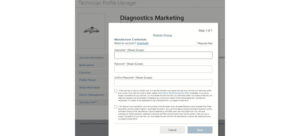More than 70 percent of vehicles sold globally in 2028 will be connected, but only 58 percent of subscriptions will be paid by consumers
New York—According to global technology intelligence firm ABI Research, connectivity will be available in over half of new vehicles sold in 2022 and more than 70 percent in 2028. Carmakers are committed to connectivity because of its various benefits, including fleet management, reduction of warrant costs, convenient Electric Vehicle (EV) ownership, and Over the Air (OTA) updates.
However, they still have not found an effective strategy to recoup the connectivity and airtime costs. Connected services adoption is low, especially among lower-tier vehicles, and the increase in free trial periods means that the ratio of paid subscriptions will contract by 20 percent between 2021 and 2028.
Despite moving to become ubiquitous, vehicle connectivity is still not a significant revenue source. “Due to the prevalence of high traffic phone data plans, end consumers have little motivation to pay for connectivity and rarely renew subscriptions after the free trial period, which carmakers are constantly extending. This is especially true for infotainment services that compete with free phone mirroring. This reality signals that it will be challenging for carmakers such as Stellantis, Ford, and GM to achieve their recently announced goals to generate US$20 billion in software and services revenues annually by 2030, at least 13 times what they generate today,” said Maite Bezerra, Smart Mobility and Automotive Research Analyst at ABI Research.
From premium to volume cars, nearly all carmakers are committed to deploying software-defined vehicle platforms and betting on revenues from delivering software-enabled services and features OTA. That requires the establishment of a revenue-generating consumer touchpoint where these new services will be bought or updated, essentially relying on user engagement with embedded infotainment systems rather than mirroring through CarPlay or Android Auto. “However, most subscription revenues presently derive from essential telematics and remote services rather than infotainment,” Bezerra added.
Connected services subscriptions are being extended to drive higher customer engagement. The average free trial period in the United States is increasing from three to six months, in Europe from one to three years (e.g., Polestar), and in China, many carmakers offer free for life connectivity (e.g., NIO, SAIC-GM). The drawback of such a strategy is that the ratio of subscriptions paid by the final consumers will dwindle. ABI Research expects more than 70 percent of active infotainment subscriptions to be on a free trial or free-for-life arrangement in 2022.
Further adding to the connected vehicle monetization challenge, software-defined vehicle platforms will considerably increase monthly data consumption — from 400-500 MB to up to 2-20 GB — and connectivity costs, which neither carmakers nor end consumers have been willing to pay so far. “Nevertheless, EVs could be the panacea for low connected services adoption by final users as they significantly improve ownership convenience,” said Bezerra.
These findings are from ABI Research’s Connected Car market data report. This report is part of the company’s Smart Mobility and Automotive research service, which includes research, data, and ABI Insights.






Comments are closed.